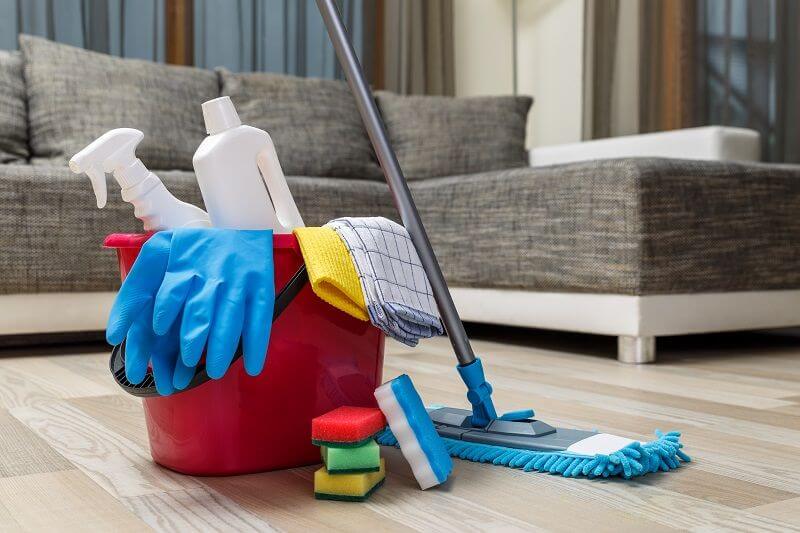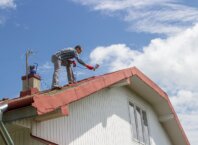A clean house is lovely, until you realise your toddler is two steps away from turning the mop
bucket into a swimming pool.
Sparkling floors and fresh-smelling counters don’t count for much if curious little hands get into
trouble. That miracle cleaner under the sink can be a lifesaver, but to your kids, it’s a science
experiment waiting to happen.
Childproofing your cleaning routine isn’t about lowering your standards—it’s about outsmarting
pint-sized adventurers. With a few clever swaps and smart habits, you can keep the shine
without the stress.

Take Stock of Your Cleaning Products
Before you can childproof your routine, you need to know what’s actually hiding in your
cupboards. Think of it less like a Marie Kondo episode and more like a Netflix true-crime
special, because some of those bottles really are suspects.
Do a sweep of everything under the sink, on bathroom shelves, and in the dusty corner of the
laundry room. You’ll probably discover a mix of half-empty sprays, long-forgotten miracle
products, and one mystery bottle you don’t even remember buying.
Hazard symbols implying corrosive or flammable compounds and warning labels are your red
flags. If the bottle feels like it belongs in a Breaking Bad episode, it’s time to say goodbye.
Finally, check your stash regularly. Bottles might get knocked around, lids can come loose, and
the safe spot isn’t always safe when you’ve got curious little explorers. Staying on top of your
cleaning arsenal means fewer accidents and more peace of mind.
Try DIY Cleaning Solutions
Homemade cleaners are an excellent way to keep your routine safe for children while also being budget-friendly.
Common household ingredients such as vinegar, baking soda, and lemon can handle a wide
variety of cleaning tasks without relying on harsh chemicals.
For example, a mixture of vinegar and baking soda works well as an all-purpose cleaner, while
lemon juice combined with water can refresh the air naturally. These simple combinations are
effective, inexpensive, and safer to use around children.
Labelling each bottle clearly is an important step, as it prevents confusion and makes your
cleaning routine more organised. Even though these solutions are natural, you should always
store them out of reach to keep your environment safe.
Consider Safe Storage
The truth is, if your cleaning products are in toddler reach, they’re basically toddler toys. And let’s face it, kids have the agility of mini parkour athletes, so just pushing them to the back of the cupboard won’t be enough.
Think vertical. High shelves are your safest bet, but locked cupboards are a close second. If you
have to keep your supplies on the lower shelves, invest in child-proof locks. They may seem
fiddly for adults, but that’s the point—little fingers won’t crack them.
Clear storage containers are handy, as you can see what’s inside without rummaging, but
visibility doesn’t equal safety. Keep them tucked away where small explorers can’t get creative.
While we’re at it, don’t forget those seemingly innocent tools. A mop sliding to the floor can feel
like Jenga gone wrong, and a toppled broom has slapstick written all over it. To avoid accidents,
it’s best to store them upright and out of the way.
Things change quickly and quietly, so try to run a weekly check. It’s like a security patrol for your
cleaning cupboard to make sure nothing has moved into an accessible spot.
Use Child-Safe Cleaning Tools
Few cleaning tools are immune to mischief when kids are around. That’s why it’s a good idea to stick to the basics. Microfibre cloths and non-toxic sponges are often good. They’ll keep your home sparkling without adding hidden risks.
Avoid anything sharp or overly complicated. If it looks tricky or tough to handle, it’s probably not
worth the stress.
Long-handled brushes and dusters are a smart choice, allowing you to reach high corners and
tricky spots without balancing on a chair that might give your toddler ideas.
The bonus with safe tools is that kids can lend a hand, too. Your older children can help with
dusting or wiping down tables, which will turn chores into mini-lessons in responsibility.
Set a Kid-Smart Cleaning Schedule
A cleaning schedule is not only about tidiness but also about keeping your routine in sync with
your children’s activities.
Plan tasks for moments when the house is calmer, such as nap times, homework hours, or quiet
play. This will allow you to complete your work without added worry.
Cleaning in smaller, manageable steps is often more effective than attempting everything in one
go.
Quick weekday wipe-downs prevent build-up, while weekends can be reserved for deeper
scrubbing. A simple timer can help you stay focused and finish chores efficiently.
As we’ve mentioned, sharing responsibilities can also make the process lighter and teach your
kids valuable lessons. Younger children can put toys away, while older children can take on
small tasks, such as dusting or folding laundry.
Even with a well-structured plan, life can become overwhelming, making regular cleaning hard to manage. At such times, calling in a professional service that uses child-safe products ensures your home stays fresh and safe, without placing additional strain on your schedule.
Educate Your Children About Safety
Children learn best by observing and practising, so it is important to make safe cleaning habits
part of everyday life. If they see you locking cupboards, checking labels, and storing products
carefully, they will begin to copy those actions.
Start conversations early and keep them simple. Show your children what warning labels look
like and explain that strong smells or certain symbols mean extra caution.
As children grow, they can take on age-appropriate tasks, such as dusting or sorting laundry.
Offer encouragement and positive feedback when they contribute. A few kind words can make
the experience enjoyable and motivate them to continue helping.
Conclusion
It can feel like the toddler years will last forever, with little feet padding around and curious
hands reaching for everything in sight. The truth is, this stage passes quickly.
What lingers, though, is the peace of mind that comes from knowing you did your best to keep
your child safe during their fearless early years.







